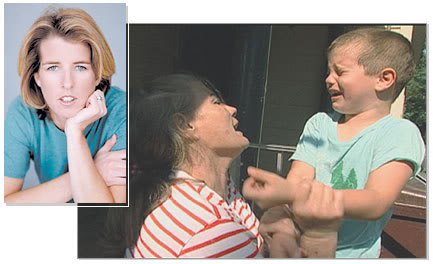In 1944, two men at Johns Hopkins University Hospital pioneered a groundbreaking procedure that would save thousands of so-called blue babies’ lives. One of them, Alfred Blalock, was a prominent white surgeon. The other, Vivien Thomas, was an African American with a high school education. Partners of the Heart tells the inspiring, little-known story of their collaboration. Blalock recognized Thomas’ talents when the younger man came inquiring after a hospital janitor’s job. But though Blalock came to treat Thomas with tremendous respect in the lab, the two men were rarely treated as equals in the outside world. Over time, Thomas would go on to train two generations of the country’s premier heart surgeons. In 1976, more than three decades after the first blue baby’s life had been saved, Johns Hopkins finally formally recognized Thomas’ extraordinary achievements, awarding him an honorary doctorate. Narrated by Morgan Freeman.
Summary info for schedule – will be hidden on film page

Partners Of The Heart
58-minutes
Screening day / time
Partners Of The Heart
Filmmaker(s)
Running Time
Partners Of The Heart
Filmmaker Notes:
Film Description I think he is the most un-talked about, unappreciated, unknown giant in the African American community. What he helped facilitate impacted people all over the world. — Dr. Levi Watkins, surgeon At the height of segregation in the United States, an unlikely alliance between a black medical genius and a white surgeon led to some of the 20th century’s pioneering medical breakthroughs, chief among them the procedure that cured the heart defect that caused “blue baby syndrome.” Partners of the Heart tells the remarkable but obscure story of Vivien Thomas, whose medical collaboration with surgeon Alfred Blalock opened new paths for healing at a time when most doors were closed to African Americans. As a young man in Nashville, Tennessee’s middle-class black community, Thomas dreamed of becoming a doctor. But after the Great Depression wiped out his savings, he took a low-paying job at Vanderbilt University’s medical school. He was 19 years old. His job classification was janitor, but he quickly became the trusted assistant to the temperamental, ambitious surgeon Alfred Blalock, age 32. Despite their different backgrounds, race and status, the two men developed a congenial friendship and genuine respect for each other within the lab. At Vanderbilt, they made their first medical breakthrough: they proved that shock was caused by loss of blood and other fluids. When Blalock’s growing renown led to a job offer at Johns Hopkins as chief of surgery, he made it a condition that Thomas accompany him. In 1941, Thomas, his wife, and two young daughters moved to Baltimore. In that city and at Johns Hopkins, Thomas encountered prejudice, racism and segregation as never before. Colleagues and collaborators in the lab and the operating room, Blalock and Thomas could not eat at the same table in the hospital cafeteria. At Hopkins, Blalock and Thomas tackled a deadly heart defect that afflicted thousands of babies each year, stunting their growth and leaving them listless and with a bluish cast to their skin. Spurred by Hopkins colleague Helen Taussig, chief of pediatric cardiology, Thomas and Blalock spent a year investigating “blue baby syndrome” and devising a surgery to correct it. As Blalock attended to his many administrative duties, Thomas did the day-to-day work in the lab to advance the project, even creating specialized surgical instruments for the exacting procedure. In November 1944, a critically ill 15-month-old, weighing just nine pounds, was wheeled into the operating room. Cardiac surgeon Dr. Denton Cooley recalls, “The real worry was could a little blue child like this withstand surgery?” With Thomas at his side, directing his every move, Blalock embarked on a desperate attempt to save Eileen Saxon. It was the first time he had performed this operation outside the laboratory. After 90 minutes, Blalock began to sew up Eileen’s tiny arteries. When the clamps were removed and the baby’s lips blushed a bright pink, wrote Thomas, “you have never seen anything so dramatic. It was almost a miracle.” Alfred Blalock and Vivien Thomas had successfully pioneered an operation that would bring fame, glory — and hundreds of sick babies and their desperate parents — to Hopkins. In the first year alone, the team performed more than 200 operations. As the hospital’s reputation grew, so did Thomas’s responsibilities. The former carpenter with no college education directed the research laboratory, training the country’s brightest young surgeons. Yet he struggled to make ends meet and moonlighted as a bartender — often at functions attended by those he trained during the day. When Alfred Blalock died in 1965 at age 65, Vivien Thomas fell into a depression and did not undertake a major research project for six years. Then, as Hopkins took halting steps toward desegregation, he made a new role for himself as mentor to the first generation of African American medical students, as well as hospital staff. Entering his sixties, Thomas began to reap some richly deserved recognition for his contributions to cardiac surgery. In 1971, Blalock’s former surgery students presented him with a portrait they commissioned to hang on Hopkins’ walls. Five years later, Vivien Thomas received an honorary doctorate from Johns Hopkins. After 37 years at Hopkins, he was appointed to the medical school faculty. Vivien Thomas retired in 1979 and died in 1985 at age 75.


